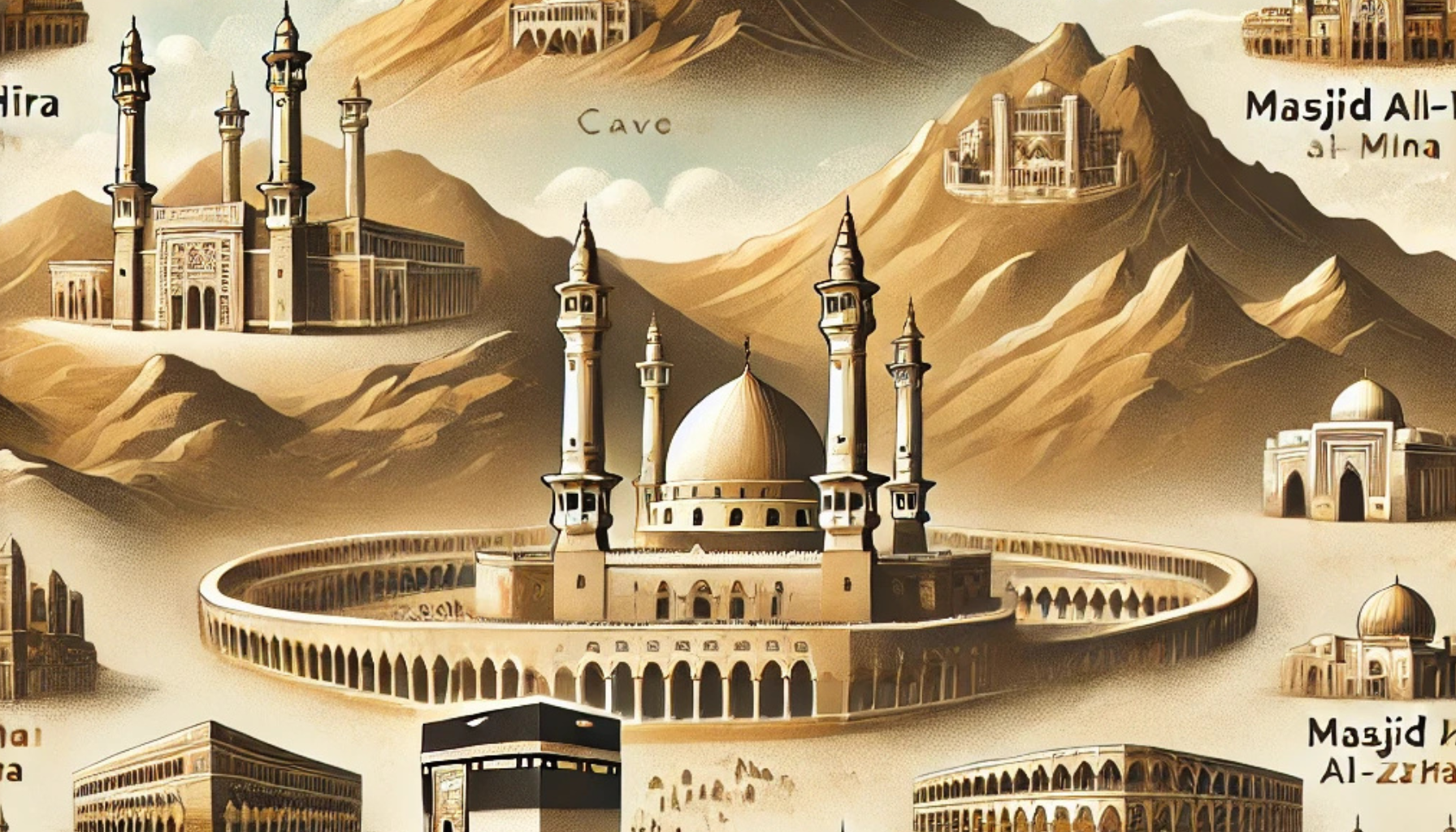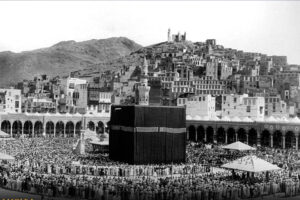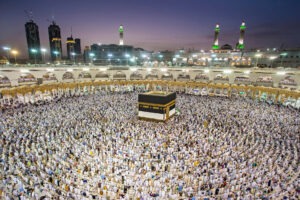The Great Spiritual Journey of Hajj and Umrah
Hajj and Umrah are magnificent spiritual journeys that take pilgrims through numerous historical and geographical sites of immense significance to Muslims. These sacred sites not only hold religious importance but also serve as a testament to Islam’s rich heritage. Below are some of the most prominent historical landmarks associated with this journey:
1. Hira Cave
Located on Jabal Al-Nour (Mountain of Light), approximately 5 kilometers northeast of the Holy Mosque in Mecca, Hira Cave holds great historical significance. It is the place where Prophet Muhammad ﷺ used to worship before his prophethood and where he received the first revelation of the Quran.
2. Thawr Cave
Situated on Jabal Thawr (Mount Thawr), about 7 kilometers south of Mecca, this cave is historically significant as the refuge of Prophet Muhammad ﷺ and Abu Bakr Al-Siddiq during their migration to Medina.
3. Al-Bai’ah Mosque
Located in Mina, around 8 kilometers east of the Holy Mosque in Mecca, this mosque marks the site where the Ansar pledged allegiance to Prophet Muhammad ﷺ in what is known as the Pledge of Al-Aqabah.
4. Al-Jinn Mosque
Situated in the Al-Ghazza district, 2 kilometers from the Holy Mosque in Mecca, this mosque is notable for the story of the Prophet ﷺ meeting a delegation of Jinn who embraced Islam.
5. Zamzam Well
Located within the Sacred Mosque near the Kaaba, this blessed well is tied to the story of Lady Hagar and her son Prophet Ishmael (peace be upon them). It continues to provide sacred water to pilgrims and worshipers from around the world.
6. Quba Mosque
Found in Medina, southwest of the Prophet’s Mosque and about 420 kilometers from Mecca, Quba Mosque was the first mosque built in Islam, established by Prophet Muhammad ﷺ during his migration to Medina.
7. Qiblatain Mosque
Located in Medina, approximately 420 kilometers from Mecca, this mosque is historically significant as the site where the Qibla was changed from Al-Aqsa Mosque in Jerusalem to the Sacred Mosque in Mecca during prayer.
8. Mount Arafat
Situated 22 kilometers east of the Holy Mosque in Mecca, this mountain is profoundly significant as the site of the central ritual of Hajj. Pilgrims gather here on the 9th of Dhul-Hijjah for supplication and worship.
9. Muzdalifah and Mina
Located between Arafat and Mecca, Muzdalifah (9 kilometers from the Holy Mosque) and Mina (7 kilometers from the Holy Mosque) are pivotal locations in the Hajj rituals. During the days of Tashreeq, pilgrims collect pebbles in Muzdalifah and stay in Mina to perform the symbolic stoning of the devil.
These historical landmarks are not just geographical sites but also symbols of Islam’s deep spiritual and historical heritage. They continue to inspire faith, reflection, and devotion for all who visit them.







